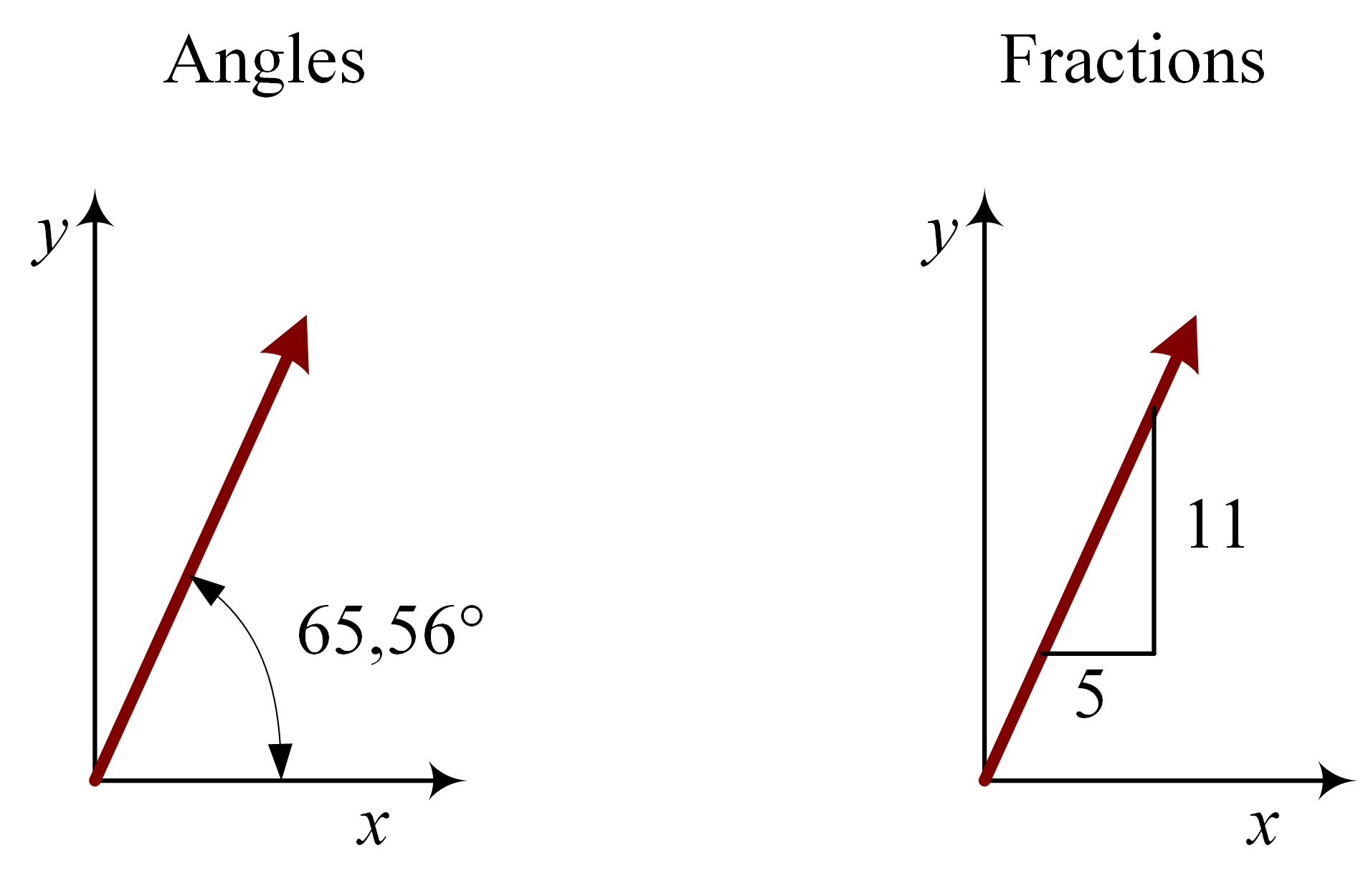Loads#
The direction and size of all types of loads might not be known and can be indicated indicated symbolically in which the positive direction is given by the drawn direction.
Force#
Forces are modelled as vectors as are treated in the book Engineering Mechanics Volume 1 in chapter 1.3.5 and 1.3.6 (Hartsuijker and Welleman, 2006). At Civil Engineering at Delft University of Technology the visual notation is used in most cases.
Directions of forces can be described by angles or with fractions as shown in Fig. 1. Using fractions eases calculations when the root of the sum of the squared components is an integer.

Fig. 1 Direction of force described by angles or with fractions#
Couple#
Couples are treated in the book Engineering Mechanics Volume 1 in chapter 3.1.4 and 3.3.3 (Hartsuijker and Welleman, 2006). At Civil Engineering at Delft University of Technology the visual notation is used in most cases.
Distributed loads#
Distributed loads are treated in the book Engineering Mechanics Volume 1 in chapter 6.3.1 (Hartsuijker and Welleman, 2006).
Exercises#
If you’re a TU Delft student, you can practise using the ANS exercises:
exercises on distributed loads. Every time you open this link you get a new exercise. These exercises require you to be able to solve equilibrium
exercises on support reactions with distributed loads. Every time you open this link you get a new exercise. These exercises require you to be able to solve support reactions
Exercises are available in chapter 6.6 of the book Engineering Mechanics Volume 1 (Hartsuijker and Welleman, 2006). These exercises require you to be able to calculate support reactions
